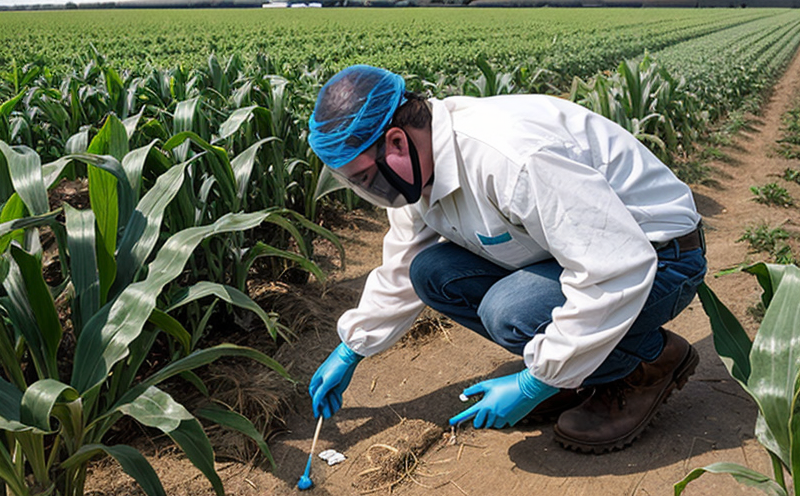Imazapyr Residue Testing in Crops
Imazapyr is a broad-spectrum herbicide used extensively in agricultural settings to control broadleaf weeds, grasses, and sedges. The use of imazapyr can significantly enhance crop yields by eliminating competing vegetation; however, its residues in crops pose potential risks if not adequately managed or regulated. Ensuring that imazapyr levels remain within acceptable limits is crucial for food safety, consumer health, and environmental protection.
Given the increasing demand for pesticide-free produce and stricter regulations regarding pesticide residue tolerances, accurate and reliable testing of imazapyr in crops has become indispensable. This service aims to provide comprehensive analysis and reporting that meet stringent international standards such as ISO, ASTM, EN, and IEC guidelines.
Our laboratory specializes in providing precise and efficient imazapyr residue testing services using advanced analytical techniques like High-Performance Liquid Chromatography (HPLC) with Diode Array Detection (DAD). This method allows us to detect even trace amounts of imazapyr, ensuring high accuracy and precision.
Before conducting the analysis, we meticulously prepare the samples by following established protocols. Sample preparation involves thorough mixing and sub-sampling to ensure representativeness. Post-sample preparation, our state-of-the-art HPLC-DAD equipment enables us to achieve optimal resolution and sensitivity in detecting imazapyr residues.
The results of the testing are reported promptly and comprehensively. Our reports include detailed information about the detected levels of imazapyr, along with comparisons against established limits specified by regulatory bodies like the European Union (EU) and U.S. Food and Drug Administration (FDA).
Our commitment to quality extends beyond mere compliance; it encompasses ensuring that our clients have access to accurate data that can inform critical decisions regarding product safety and regulatory compliance.
Quality and Reliability Assurance
- We adhere strictly to international standards such as ISO 17025 for our laboratory operations, ensuring the highest level of reliability in all testing procedures.
- All analyses are performed by certified analysts who undergo continuous training to stay updated with the latest methodologies and technologies.
- Our quality control measures include regular calibration of instruments using traceable reference materials and participation in proficiency testing programs recognized globally.
Competitive Advantage and Market Impact
Accurate imazapyr residue testing is not just a regulatory requirement but also a strategic asset for businesses operating within the agricultural sector. By ensuring that our clients meet or exceed all applicable standards, we help them maintain a competitive edge in both domestic and international markets.
Compliance with these standards can lead to increased consumer trust, thereby enhancing brand reputation and market share. Furthermore, being able to provide detailed reports on imazapyr residues allows companies to make informed decisions about production processes and potentially improve crop yields without compromising safety or environmental impact.
In an era where sustainability is increasingly important, demonstrating adherence to stringent residue limits can position businesses as leaders in eco-friendly practices. This proactive approach fosters long-term relationships with customers who value transparency and reliability.
Use Cases and Application Examples
Our imazapyr residue testing service is applicable to various scenarios including post-harvest quality control, batch release verification, and research studies aimed at optimizing herbicide application techniques. Here are some practical examples:
- Post-Harvest Quality Control: Farmers can use our testing results to ensure that their crops comply with national or international standards before marketing them.
- Batch Release Verification: Processing plants can verify the compliance of incoming raw materials to safeguard product quality and safety.
- Research Studies: Scientists investigating optimal herbicide usage patterns benefit from precise residue data, which can guide best practices for sustainable farming.





